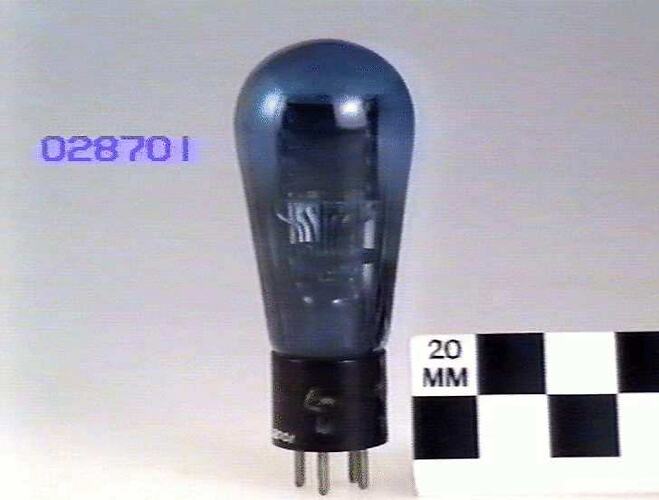Summary
Used as a driver and output amplifier in radio receivers and amplifiers (Class A amplifier and Class B push/pull amplifier). It was introduced in 1932, and has a 2.5 volt directly heated cathode.
Although this valve had two grids, it was designed to be used as a triode, either with both grids tied together or with the outer grid tied to the plate. With both the grids tied together the tube was suitable for zero bias class B operation, with the outer grid tied to the plate the tube was suitable for use as a driver for a class B output stage. Three of these tubes could be used to produce up to 20 watts with one as a driver driving a pair in push-pull. This idea did not catch on.
Physical Description
Five pin American style base. Blue glass bulb
More Information
-
Collection Names
-
Collecting Areas
-
Acquisition Information
Donation from Mr Finlayson (Fin) Stewart, 14 Jun 1973
-
Manufacturer
-
Inscriptions
Base: Arcturus No. 46 Made in USA Bulb: 46
-
Brand Names
-
Classification
-
Category
-
Discipline
-
Type of item
-
Overall Dimensions
133 mm (Length), 54 mm (Outside Diameter)
-
References
[Book] Stokes, John. 1982. 70 Years of Radio Tubes and Valves., 1982, 69 - 70 Pages
-
Keywords

